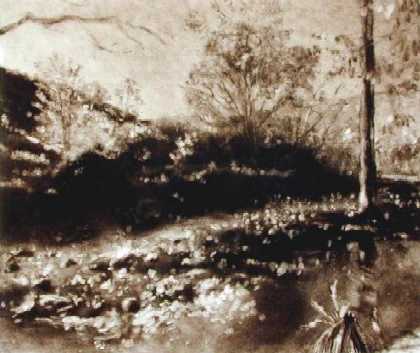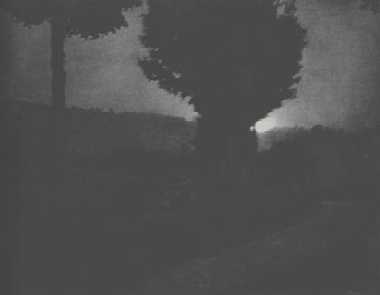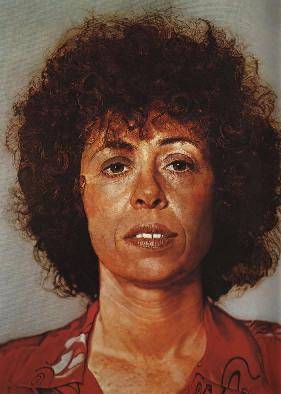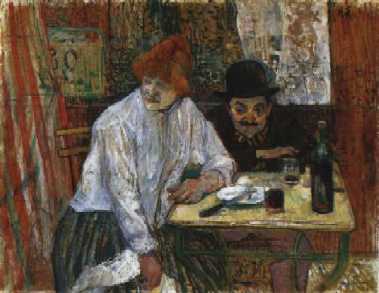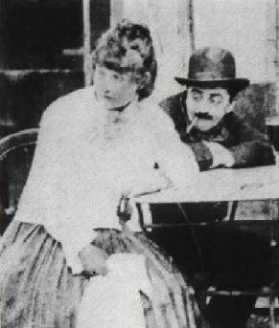How Tucker Hill Makes Images
Madison County, Virginia, April 30, 2000, 6:40 p.m. "These prints are about time. From the instant the process begins as an idea (which is reflected in the straightforward "place/time" titles for most of them) through the days, months or years before they are actually created, to the single day in which the oil color is applied to the print plate and the oil color is ultimately transferred to the paper to create a single unrepeatable monotype - these prints embody the peacefulness of timelessness. They are a snapshot of a moment worth being in." [Tucker Hill]Hill usually works from black-and-white photos taken while he is traveling around Madison County - tree-lined lanes, rural crossroads, farms, mountain views or wilderness. He shoots spontaneously views that strike him as promising. He makes a print of the photo that is reversed, left to right, so the scene is "flipped" and its values, balances and perspectives are seen without the distraction of viewing the real scene. From this photo image, Hill makes a freehand drawing (again in flipped perspective) on transparent tracing paper, reshaping and emphasizing for balance, rendering an imagined sketch of the scene. The transparent sketch is put under an acrylic plate over a light box, and the application of paint begins, using the sketch as guide. Since the oil color immediately begins to dry as he applies it, Hill can only work a single day on each print. When the painted acrylic plate is put into the press against damp unmarked paper, the process again reverses the image - left becomes right - and the final, single print captures the recognizable essence of the original scene. This does not suggest that Hill is making a replica of a photograph - the photograph is a starting point. The relationship of photography to painting has been controversial for the 170 years since photography was invented. The use of photographs by artists is more widespread than usually realized. There was a time, in the
early 1900s when photographers imitated paintings:
Working from a photograph no more implies making a copy than does working from a scene in nature. Van Gogh painted from life, hauling his easel to fields and farms but he was not copying what he saw before him. To say an artist is copying the visual frame from which he or she works, whether in the open country, a studio, or from a photo, misses the complexity of the process. Hill labels his works by place and date because he uses a photograph to capture a moment, a scene he finds appealing, at a specific time of year and time of day. Later he returns to the photo to recreate the visual moment that attracted him. To do so, he must enhance, modify, manipulate and extend what the photograph recorded, to convey the emotion, balance and light that created the original impression on him. "I can hardly help thinking about 'place/time' on the day in which I am making the print, looking into the clear acrylic print plate lying on a florescent light box (I have used the same smooth plates and light box for over 15 years), brushing on Ivory Black and Burnt Umber oil color, breaking the ink down into soft shadows with a flat stencil brush, removing some of it with paper as the 'light' seems to push through, adding some more oil color as the day wears on. Slowly, the image takes on the reality of a place I know."
|
|||||||||||||||||||||||
